Summary
Summary
https://www.zdergisi.istanbul/makale/summary-312
 Water of Life
Water of Life
Murat Öztabak
Water has strengthened the healing, the source of life, the purity and the constant existence, the will of his immortality. In the mythologies of societies that perceive the rebirth of water as a sign of good and good intention from the earliest times, there are descriptions about the water. In northern Europe and Celtic mythology four rivers fl ow from heaven to the earth; they are believed to off er four eternal attributes (life, immortality, youth and wisdom) to mankind.
Water and Symbolism of Water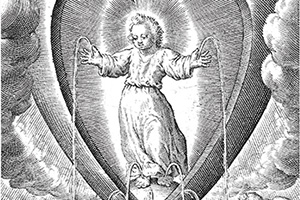
Mırcea Eliade
The principle of potential power and non-dissociation is the basis of all cosmic manifestations, the water that is the bearer of all seeds, symbol of the fi rst essence that all forms have sprung up and will turn into a disaster or a result of their own stretches. At the beginning and at the end of any historical or cosmic cycle, water is and will always exist. But it can never exist alone; because it is a source of life that potentially includes all forms in its unbreakable integrity. Whatever the cultural pattern, water always have the same function in cosmogony, myths, rituals, iconographies; the processor of every form is the support of every creature.
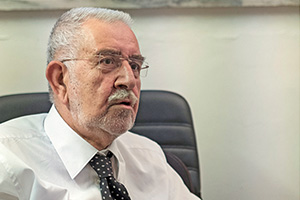 An Interview with
An Interview with
Ömer Tuğrul İnançer
An interview with Omer Tuğrul İnançer about the place of water in Islam and Islamic mysticism, clean and cleanness, material and spiritual purifi cation and Zam-zam water.
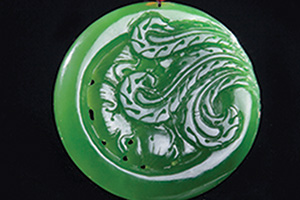 The Traditıon of Rain Prayer
The Traditıon of Rain Prayer
Ergün Veren
The ritual of praying for rain diff ers from place to place, religion to religion and culture to culture, but it somehow reached today through cultural exchange and can well be named as a tradition. People were praying their gods for rain when there was a scarcity of water or when it was diffi cult to reach it underground. Among the Turkish poeple it is called “prayer for rain”. In folklore studies it is called “the ceremony for rain”. Just like in many other cultures, this ritual or prayer is followed to get rain.
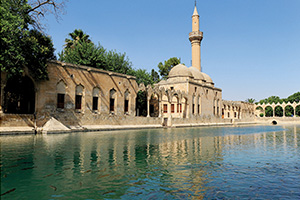 Water in Folk Belief
Water in Folk Belief
İsmail Taşpınar
Water is a part of Earth-Water belief in old Turkish beliefs. Water, one of the four elements in the universe, is the opposite of fi re and has an entity that completes it. The water falls from the top as the rain, and it can spring out through the soil. In both ways, water causes fertility to form. For water springs out from the soil, it is a source of abundance and is considered as the mother of nature. Because rain comes from the sky, that points water’s divine source. The water from the sky brought along fertility to the earth. According to the folk belief this fertility could show itself in everything the water touched.
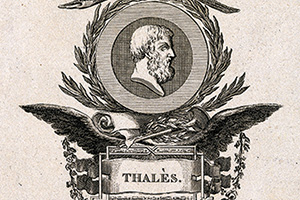 Waters of Thales
Waters of Thales
Tanju Toka
The fi rst and foremost proposition of Aristotales, which he referred to as Thales’s, was “Water is the arche, the principle, the nature, the cause or the root of everything” we understand that he actually answered the question of what is left unchanged in the changing thing with water, which actually exists in the universe everywhere and in diff erent forms.
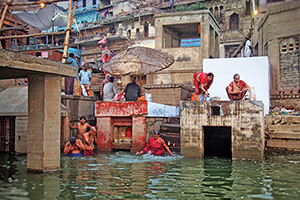 Water Related Rituals in Religions
Water Related Rituals in Religions
İsmail Taşpınar
Water related motifs and the rituals that are carried out depending on them are a situation encountered in many diff erent cultures and religions from ancient times. The use of water in rituals is also carried out with the prayers and worships performed in the rivers, springs and lakes, which are considered sacred. It is the most important indication of that the buildings are built in these sacred places.
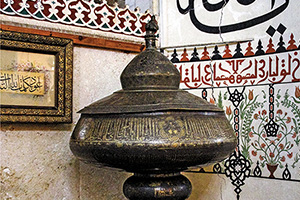 April Bowl
April Bowl
M. Zeki Oral
I n some regions of Anatolia the traditions related with “rain prayer” have reached today from the old Turks. They used to go during spring time to mountainous regions and pray for the coming of generous rains. They believed that leaving bowls outside and make them be full of the spring rain and after drink or take a bath with it was a way to obtain health. During Selcuk period the conversion of Turks to Islam in Anatolia and the believes of the benefi ts and the sacredness of the water were united together with the traditional thought of the people about the April rains considered as a symbol of abundance and benediction.
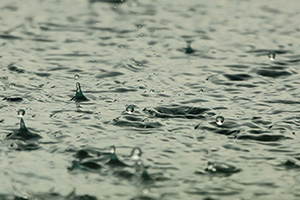 April Rain
April Rain
Nail Tan
I April, is the month that the flowers blossom, the grass breeds. Fruit trees bloom this month. the seedlings of many vegetables also grow on April. The yield in agriculture is strongly dependent on the April rains. April rains are also a source of healing in popular belief. Traditions like getting wet under the rain, drinking rain water, washing clothes with rain water, etc. are still taking place.
 Christianity: The Religion Kept Alive with Water
Christianity: The Religion Kept Alive with Water
Tacettin Kutay
The Holy Church, where Jesus Christ was founded, is portrayed as the ark of Noah to save the Christians. The churches built in the middle ages were built basically like a ship. Christians tried to protect their identity with symbols. Among these symbols is the Greek word fish, which is the Greek word from the initials of the words of “Jesus Christ God, the Saviour of the Savior,” this choice of IXOYE” can be seen as a vocabulary game, besides considering the importance attributed to the water, it is to be understood why Christians of the first period prefer water-related symbols instead of other items of nature
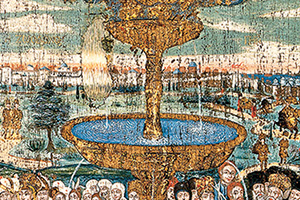 Healing Springs of Byzantine
Healing Springs of Byzantine
Brıgıtte Pıtarakıs
Byzantines, in their battle against diseases, they had combined physical combat (experiment-based, application of medical treatments) and mental combat (confusion of spirituality and spell). Some forces have combined different methods of healing as complementary practices through a kind of communication between spell and medicine. By focusing on the power of sun, this study examines the role of both in the rituals search for health and purification is dominant, symbolism of both (cosmic or divine light and soul) and the motifs associated with them.
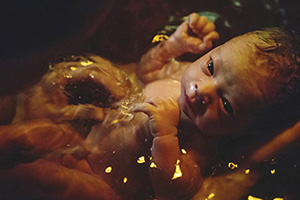 Birth in Water
Birth in Water
Murat D. Çekin
Some of the women who are in labour tries when the option of entering the water and given birth in it is offered them as an option. Thus, the effect of gravity decrease, their weight and the weight of their baby becomes lighter. Byzantines, in their battle against diseases, they had combined physical combat (experiment-based, application of med.
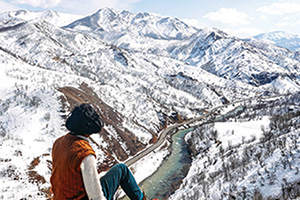 Waters Believed to Heal
Waters Believed to Heal
There are considered numbers of waters in Anatolia which are regarded as curative like Dumlu Baba Water, Toparlak Baba Water and Istanbul water well inside Hagia Sophia, water well inside the shirine of Aziz Mahmud Hüdâyî.
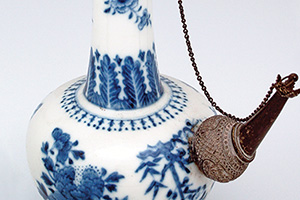 Zam-zam
Zam-zam
Mustafa S. Küçükaşçı
None of the wells that opened in the Arabian Peninsula, where Hicaz was included, were as long-lived, prominent, and important as the zam-zam near the Kaaba in Mecca. The zam-zam, located directly opposite alHajar al-Aswad in the south of Masjid al-Haram, the mosque that surrounds the Kaaba, is the name of the sacred water of the Muslims and of the everconsuming water.
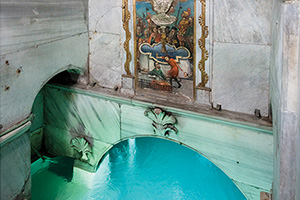 The Culture of Ayazma in Istanbul and Balıklı
The Culture of Ayazma in Istanbul and Balıklı
Önder Kaya
The term ayazma brings to our mind the culture of holy water present in the Orthodox faith. The very word ayazma is Greek and is transform into the everyday language from the “Hagiasma” which means “holy place”. The cult of ayazma came about based on the belief of Orthodox people, who combined saint myths whith some underwater springs. At the moment in İstanbul there are both forgotten and still popular ayazmas. The popular ones are visited by not only orthodox people but by muslims also for many reasons such as healing. One of these is the Balıklı Kilise ve Ayazması (Balıklı Church and Ayazma) in Zeytinburnu. It is important not only as a folkloric symbol but also as the final resting place of Fener Greek Orthodox Patriarchs.
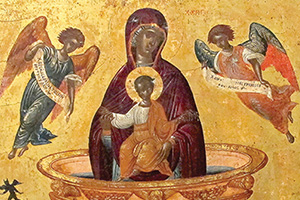 Water and Healing in Constantinople
Water and Healing in Constantinople
Robert G. Ousterhout
I n the Byzantine Constantinople, both medically and intellectually healing processes took place in different architectural spaces. Some of the healing spaces were well-planned some of them were improvised. With the few archaeological finds of the ayazmas (the holy springs), there is almost nothing left from the Byzantine hospitals, and it is unclear whether there is an institutionalized
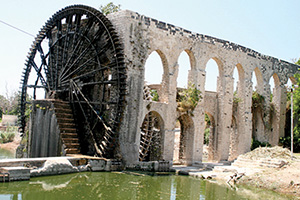 Civilization of Water
Civilization of Water
Dilaver Demirağ
Water, essence of existence. Water, formless which shapes forms. Water, abundance which turn its face to earth and sky. Focus of the symbolic imagination of love and aesthetics. it’s a murmur of the thousand years in culture and civilization. This holy symbol of fertility initiates the cultures. And civilization has come from this. Civilization is ultimately the participation of nature in the universe of cultures. Culture was the second nature belong to mankind. This second nature is also the technique, mythology and so on.
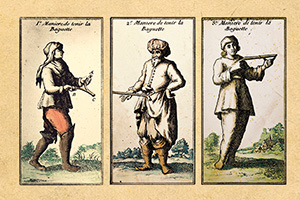 Traditional Methods of Water Detection
Traditional Methods of Water Detection
Charles Richet
Radiesthesia is the science of using the vibrational fields of the human body to access information about other objects of animate or inanimate nature by establishing resonance with their energy fields, using specially calibrated instruments and a scale of qualitative measurement to decode this information. Different uses of Radiesthesia have been seen through throughout the ages. In general, there are two different methods of radiesthesia: the fork bar method and the pendulum method. The fork bar method is mostly used in the present.
 An Interview with Semavi Eyice Water Throughout Roman and Byzantine Era
An Interview with Semavi Eyice Water Throughout Roman and Byzantine Era
Semavi Eyice, who was called as “the man who clarified istanbul’s history” by Halil İnalcik, had a talk in his home about the water problems of the city surrounded by walls, the cisterns and the waterways built during the Roman times on to Byzantine and Ottoman times. This conversation with Semavi Eyice will provide important information regarding this very topic to its readers.
Mîmar Sinan’s Water Engineering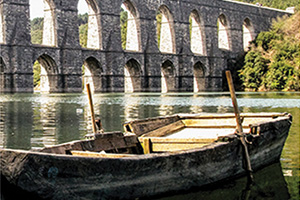
Suphi Saatçi
Sinan, whom gave many works of art during the period of Yavuz Sultan Selim, Sultan Suleyman the Magnificent, Selim II, and Murad III, in fact, has a great engineering accumulation. When Sinan’s life is examined, it appears that he was interested in engineering before architecture. In other words, Sinan built constructions that entered more to engineering fields, such as bridges, waterways and arches, before mosques and madrasahs His early interest of carpentry, later more focused on water-impervious constructions such as bridges, waterway arches, fountains and baths.
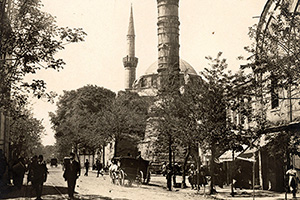 Köprülü Waterway
Köprülü Waterway
Fatih Dalgalı
There are 3 maps in the Köprülü Library show the conduction and the distribution of the Köprülü Waterways within the city. The map dated 1672 indicating the waterways begin with the Karaahmedli Karyesi outside the city and the nearby Deli Birader Fountain and end in Tavuk Pazarı, Vâlide Hamam and Köprülü Madrasa. The adaptation of this map to modern days which made in the second half of the XVII. century, is quite difficult. As a result of the destruction and development of the buildings in Istanbul, many of our historical artifacts have been destroyed or irreparable devastation have been made.
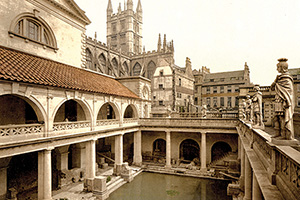 Water and Cleaning
Water and Cleaning
Mesut Gök
The fact that water is one of the basic elements of life makes it possible for us to think that using it as a cleanser/purifier is as old as the existence of mankind. Contemporary anthropological data shows that a wide variety of liquids have been used as a cleansing substitute for reasons such as availability, smell, color, antiseptic properties, or the fact that they only have a symbolic meaning over time in the culture of the community. On the contrary, it is an extremely widespread idea that water is regarded as the basic substance fulfilling these functions.
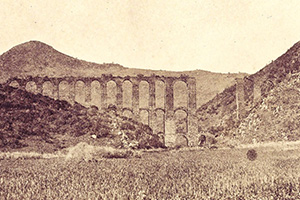 Ottoman Waqf Waters
Ottoman Waqf Waters
Said Öztürk
Waqfs played an important role in the construction of the cities and providing the basic needs of the people during the Ottoman state. Within the basic needs of society, providing water has a vital importance. For this reason, water supply has become one of the main issues on which the waqfs focus. Since the conquest of Istanbul, many waterways have been built all over the city. In addition to these, short distrubited waters have been constructed as waqf waters. In Beside these lines, fountains were built in different places and wells were opened.
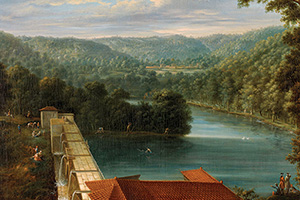 Dams in Belgrad Forest
Dams in Belgrad Forest
Şinasi Acar
İ stanbul is a city of water, surrounded by it and grows with it. However, it has never been city where fresh water is abundant. Starting from the Romans, certain structures were built to bring fresh water. The Ottomans also built cisterns, weirs and fountains to create a network. There are no remains of a dam from the Roman time considering the number of cisterns they’d built. We can clearly say that the remains of the Ottoman weirs in Belgrade forest may indicate the existence of an earlier Roman weir. Karanlıkbent could be the very first weir built by the Ottomans.
 Drinking Water Sources of Istanbul and tools of supply
Drinking Water Sources of Istanbul and tools of supply
İilhami Yurdakul
Archaeological excavations in the both sides of Bosphorus have revealed that the city was settled between 8th and 9th millennia BC. Both the first settlers of the city and the first colonies of Greek colonies were able to supply water from springs, from wells and cisterns. The first waterway known to Istanbul which was transported by the Roman emperor Hadrian (117-138) from the western part of the city to the vicinity of Sultanahmet Square, after the existing water resources could not meet the need of the city.
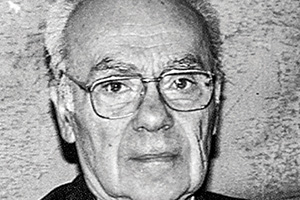 Kazım Çeçen
Kazım Çeçen
This essay gives a portrait of Kazım Çeçen a very precious and a pioneer water engineer of Turkey whose roots of the family goes back to Artukoğlları that ruled Southeast Anatolia from XI. to XIII., born in 1919, Elaziğ.
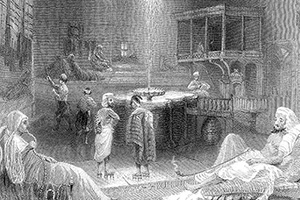 Men’s Bath and Bride’s Bath
Men’s Bath and Bride’s Bath
Ercan Topçu
The baths were built as double or single baths. Double bath design is a practice that originates from the religious-cultural structure of the society. In double baths, women and men were taking bath separately in separate sections and the baths were made to enter from diff erent places where they could not see each other. The full-day double baths were positioned so that the women’s door looked into the alley and the men looked into the street. Women’s baths are accepted as very eff ective socializing places in the traditional society. The bride’s bath is the whole of the activities to prepare the wedding preparations for the bride before wedding ceremony.
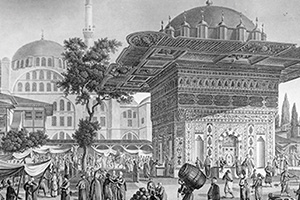 Fountain, Sebil and Shadırvan
Fountain, Sebil and Shadırvan
Yılmaz Önge
The article, which gives history of the word çeşme (fountain), the equivalent words, the fountains that these words written on their inscriptions, also gives the defi nitions of materials such as lule, the faucets that accompany the fountains. And it continues to sebil where the water is distributed for charity, and why sebil is given to as a name for them and to shadirvans that have an important place in Islamic architecture.
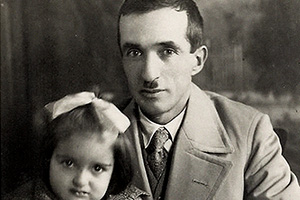 The Water Fountains of İstanbul and İbrahim Hilmi Tanışık
The Water Fountains of İstanbul and İbrahim Hilmi Tanışık
İbrahim Akın Kurtoğlu
I n his book Fountains of Istanbul, İbrahim Hilmi Tanışık starts with these sentences: “Many fountains, cisterns, waterways were built. All these monuments big and small mostly are seen and found in and around Istanbul.” He spent 50 years of his life working on his book creating an invaluable source of information for researchers. He’s left such a valuable and important source for researchers of today.
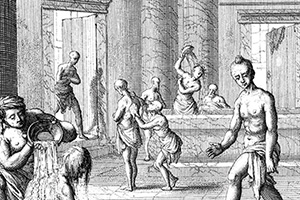 Anatolian Bath Culture
Anatolian Bath Culture
Fikret Yegül
L ike the lands of Anatolia, the bath traditions are very old and include many cultures from the past. Baths and water in the Anatolian civilizations have been a theme of intimacy and indivisibility, from the Holy Spring of Platon, which is protected by the imposing gods of the Hittite pantheon, to the ensemble of dome clusters found in almost every Turkish province and locality.
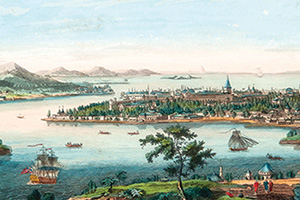 Water Culture in Evliya Çelebi
Water Culture in Evliya Çelebi
Seyit Ali Kahraman
The story of Ottoman’s the last capital Istanbul’s Kırkçeşme Waters, fountains, public fountain and artisans related to water culture, baths, bath attendants are told the most detailed and the most beautiful way in the fi rst volume of Evliya Çelebi’s Seyahatnâme. Evliya Çelebi gave detailed information about waters and bath in the other two capital cities Bursa (second volume) and Edirne (third volume).
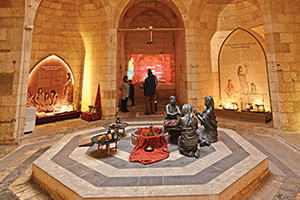 Bath Museums
Bath Museums
Hüseyin Ateş A. Çağrı Başkurt
The museum was transformed into a museum which was restored by Gaziantep Metropolitan Municipality after having served as bath of Lala Mustafa Pasha Complex for many years which is located to the south of Gaziantep, is one of the most beautiful examples of Ottoman baths. The article refers to the history of this museum and its importance.
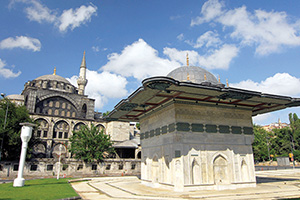 Characteristics of Fountains of İstanbul in Regard to their Periods
Characteristics of Fountains of İstanbul in Regard to their Periods
Gül Sarıdikmen
Ottoman fountains of Istanbul; is an important source of information in fi elds such as literature, history, art history and architecture. The architectures give information about the fashion of the period they were in. The fountain inscriptions are often featured as a fi ne sample of calligraphy. Verses with high literary values on inscriptions provide opportunities to poets to show their talents and earn money
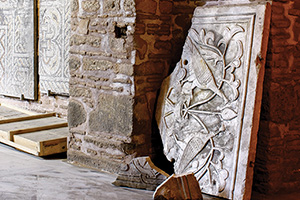 Lost Houses of Water
Lost Houses of Water
Nazlıgül Bulut
Many of the water fountains on Istanbul streets have been destroyed and disappeared in time. Between 1940s and 50s urban development in Istanbul changed the face of the city and damaged most of the fountains especially in Suriçi area. Because of the growing population and the need for housing and transportation, many water fountains were lost due to constructions.
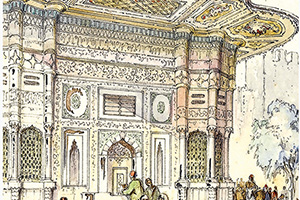 A Great Ottoman Beauty in the World’s Fair
A Great Ottoman Beauty in the World’s Fair
Şefik Memiş
As a square fountain with four sides III. Ahmed Fountain is an elegant example of water architecture. In the roof of the fountain, which is a very large fringe with a lead-covered wooden roof, there are five small domes in the courtyard, five large domes in the middle, and gold gilded bronze realms carved in them. The fountain, which looked like a pavilion, would wait until 1893 for a similar building to be built in Chicago to be used as a pavilion. Apart from the pavilions allocated in the main exhibition buildings, the Ottoman State also established building blocks called the Ottoman neighbourhood or the Turkish village. One of the works which took place in almost all the fairs of the Ottoman architectural monuments was III. Ahmed Fountain.
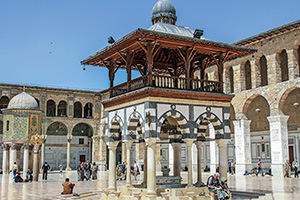 Shadırvan in the Islamic Architecture
Shadırvan in the Islamic Architecture
Nuran Kara Pilehvarian Selim Kılıçoğlu
I n the art and architecture of the Islamic states, water structures have been effectively used in building programs. Shadirvans which is belong to water structures is usually located within monumental structures such as palace, mosque, madrasah. There are shadirvans, covered or open water tanks, in some cases arranging fountains on the tank, cages protecting the water reservoir against dirt and other effects. Historically, the shadirvan built in various Islamic states were built in the centre of the inner courts with square, polygonal or circular plans.
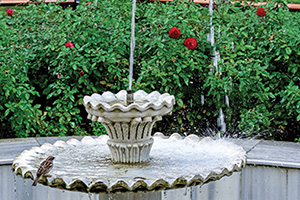 Bird Fountains
Bird Fountains
Süleyman Faruk Göncüoğlu
It isn’t known if there is any other example of bird houses in the world, but in many parts of Anatolia, especially in Istanbul, bird house on the walls of madrasahs, square fountains and dwelling buildings which are examples of Ottoman architectural.
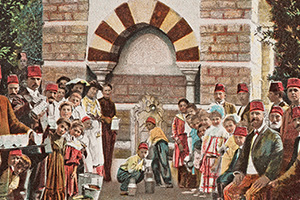 Culture of Fountain
Culture of Fountain
Ercan Topçu
In many cities in Anatolia, there are fountains under the shade of trees, willows and plane trees in the village squares and right next to it coffee houses, tea houses. The fountains were a social area, especially for neighbourhood women. It was very useful for directions.
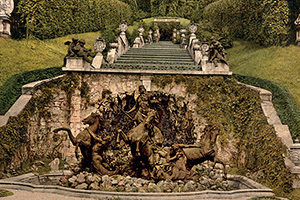 Neptune Fountains
Neptune Fountains
Serhat Kula
Neptune is a god living in a palace illuminated by a red phosphorus adorned with corals and sea flowers at the deepest point of the ocean, and possess the purity of water. Because of this, as Greeks believed that the sea representing pure emotion was the source of inspiration of all of the arts, they considered Neptune as the responsible of aesthetics. One of the reasons for the placement of the Neptune fountains in cities which are usually coastal, is belief that whenever Neptune comes to surface with his golden carriage from his underwater palace, rain and storm stops.
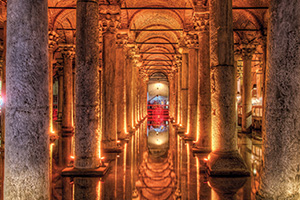 The Protecter of Water: Cisterns
The Protecter of Water: Cisterns
Bekir Sıdkı Albayrak
Cisterns are still water reservoirs and they were huge projects for the water needs of the society during the construction period of the city. Although water cisterns do not draw much attention due to their being underground, they are functional projects that have been created by the city’s waterless race in the past. The cisterns, that is, the water reservoirs; it was an architectural richness concealed together with being a warehouse built underground to collect water.
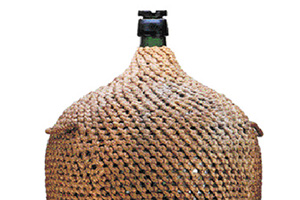 Remains from İstanbul’s Spring Waters
Remains from İstanbul’s Spring Waters
Nil Sarı
The revenue stamps and seals of the famous drinking waters have remained idle. The revenue stamps and seals of the drinking water related to the taxi or public purse are the historical evidence of the spring waters of Istanbul. A lead seal was hit to the filled carboys and containers, describing the water they kept. It was used as a reference to the waters that were filled with seals of about 2.5 cm in length, the name of each spring water.
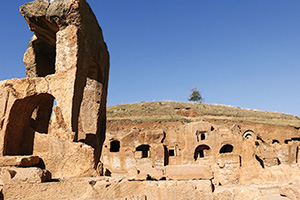 Dara Antique City and Cistern
Dara Antique City and Cistern
Selvanur Şölen
Dara city has great water systems. City interlaces with walls, bastions and ditches. The existence of these water systems was effective when the long-standing siege periods were able to resist the city’s sheltered army longer. Most of the remains that arrive from the ancient city of Dara on a day-to-day basis are early Byzantine era. However, in the city, Late Roman, Byzantine, Seljuk and Ottoman buildings are seen together.
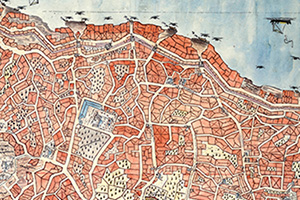 Healing Waters
Healing Waters
A. Süheyl Ünver
There are many drinking waters in Istanbul which are believed that these waters have as diuresis effect on some illness. Some of these waters stretch back to the times when the Turks confiscated Istanbul five centuries ago according to the narrative. The Byzantines had a great deal of water. The ayazma waters are still examples of that. Then what kind of waters did the people use at that time? The scholars who are busy with Byzantine examinations have searched for it. However, some of the waters from that time have been used in the same way with some examples.
Ayvaz Water of Niksar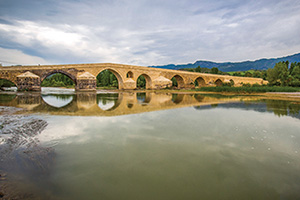
Danişmend Hüseyin Şahin
Cities owe their existence to their identities. Niksar is a city starts with an identity, character accumulated in centuries and intellect is nourished from culture of civilisations. Niksar Ayvaz water, as the identity of this city, has existed for centuries.
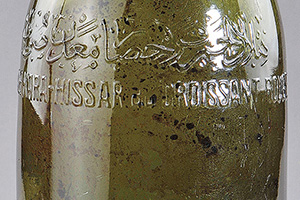 Kızılay Mineral Water
Kızılay Mineral Water
Mustafa Çakıcı
The reputation of the famous mineral water was further increased from day to day. Hence, the buyer from the surrounding areas were multiplying. It was demanded from Afyonkarahisar Maârif Meclisi that the price of bottled bottles was increased and bottles were sold in 1899 and a price was determined per bottle. Also in the same year, it was decided to build a building for this mineral water, known as “Sour Water”, and it was envisaged that the building would be built at 5395 kurush. The construction was completed in about a year and the buildings were planned to be in service in 1900.
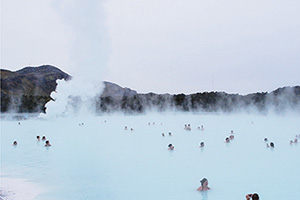 Hydrotherapy, SPA, Balneotherapy, Talassotherapy
Hydrotherapy, SPA, Balneotherapy, Talassotherapy
Zeki Karagülle
Therapeutic use of water in diff erent forms is expressed by the concept of hydrotherapy and goes back to the beginning of civilization. Balneotherapy is a method of treatment using natural, such as mineral and thermal waters (healing waters), peloids (healing muds) and gasses, by using bath, drinking and inhalation methods. Instead of natural balneological resources, normal tap water and packaged SPA products (such as mud, moss and mineral salts) are used. The point here is the health with plain water; but more beauty, aesthetics, body and skin care have gained importance.
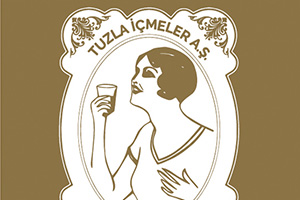 Tuzla İçmeler
Tuzla İçmeler
Kemal Çontay
The history of Istanbul is quite old, but despite its long history, its presentation is so lacking. The hot spring of Tuzla İçmeler is a resting place where people can come and have a family day, as well as a center that provides services to health tourism. The history of Tuzla Içmeler dates back hundreds of years. We are talking about the fi rst known thermal source inside the borders of Istanbul.Academic studies had revealed that this spring has been used and considered as a source of healing since the VIII. BC.
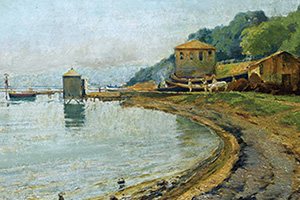 Sea Baths of İstanbul
Sea Baths of İstanbul
Önder Kaya
Swimming at public beaches was the result of widespread usage of deniz hamams, which were literally “sea baths”. We cannot exactly tell when they were fi rst used but we can roughly say that sea baths date back to the second half of the 19th century and seen around the Bosphorus and the Marmara Sea. By 1872, there were 64 sea baths in Istanbul, 28 of which for ladies and 34 of which for men. They were mostly in Çengelköy, Beykoz, Paşabahçe, Büyükdere, Üsküdar, Salacak, Moda, Bostancı, Caddebostan, Yedikule, Yenikapı, Kumkapı, Ahırkapı, Çatladıkapı, Kartal, Maltepe, Pendik ve Tuzla. Except for Üsküdar and Beykoz, they were situated in areas where a smaller muslim community lived.
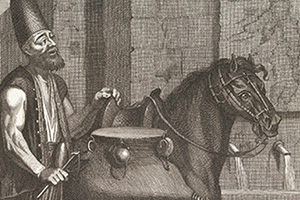 Master of Saka’s: Saka Baba
Master of Saka’s: Saka Baba
Haşim Şahin
There were saints who are distributing water or ayran to the soldiers at time of wars, Saka as a common name for these saint-like people, who are dealing with the thirst. It is possible to come across the name of Saka Baba in tombs, shrines, the street names especially in the historical districts of Istanbul. This situation suggests the presence of more than one Saka Baba in Istanbul. During this work, the presence of six Saka Baba in Balat, Eyüp, Rumelihisarı, Galata, Cihangir and Hagia Sophia in Istanbul was determined.
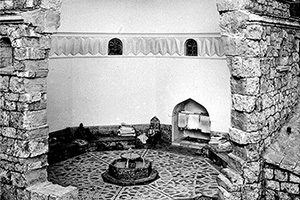 Cities that Recovers with Water
Cities that Recovers with Water
Gönül Güreş Sever Cantay
The revenue stamps and seals of the famous drinking waters have remained idle. The revenue stamps and seals of the drinking water related to the taxi or public purse are the historical evidence of the spring waters of Istanbul. A lead seal was hit to the fi lled carboys and containers, describing the water they kept. It was used as a reference to the waters that were fi lled with seals of about 2.5 cm in length, the name of each spring water.
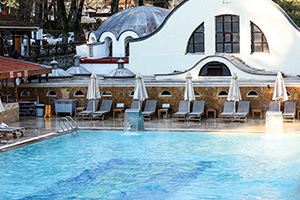 Summer Resort of İstanbul: Yalova Thermal Spring
Summer Resort of İstanbul: Yalova Thermal Spring
Mustafa Noyan
Yalova became the fi rst-choice place Istanbulites for their thermal holidays with the advantage of being close to Istanbul and being connected to it by administrative as well as the ease of transportation by ferry services connected with Islands. Some of the Istanbulites had long extended their stay in Yalova by wishing to become a summer house owner around Yalova. Yalova Thermal Spring, occurred as a result of an earthquake about 4 thousand years ago. Thermal Spring is located in a valley covered with a magnifi cent vegetation between two mountains, 12 km from the center of Yalova province. The facilities located within the thermal district of Yalova have a total of 3,600 acres of forest
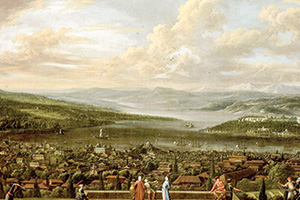 A Waterway Civilization: Bosphorus
A Waterway Civilization: Bosphorus
Süleyman Faruk Göncüoğlu
Bosphorus is the name given to the waterway that divides the Asian and European coasts between the Black Sea and the Sea of Marmara. It has been quoted in many ancient sources. It is now called in a number of European languages like English, French and German, with small pronunciation diff erences, by a Greek-origin name which means “ox pass”: Bosphorus. Thenceforth the Bosphoros this waterway known by the tribes as a route, preserves its importance as historical development, as a civilization emerging from both sides, its infl uence, myths, facts, losses and stubbornness, not only for the Istanbulites, but also for those who encounter with it.
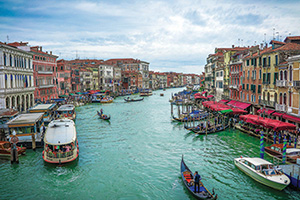 Cities that Live on Canals
Cities that Live on Canals
Faruk Fırat
The canal cities unlike the cities that are shaped around the rivers and the seas, have a unique attraction with the vascular arteries shaped waterways that running into the them. The canals, like the arms embracing the city, grip tightly on themselves and shape the life entirely
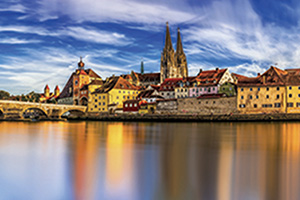 Danube
Danube
Ahmet Apaydın
T he longest river after the Volga in Europe is Danube. It originated from the Blackforests (Schwarzwald) within the borders of Germany and after a long way passed, it is poured into the Black Sea. The 2840 km journey of Danube starting in Germany ends in the Black Sea via Austria, Slovakia, Hungary, Serbia, Croatia, Bulgaria, Romania, Moldova and Ukraine. The Danube is the natural border of many of these countries, and is the only river flowing from the west to the east within the European borders.
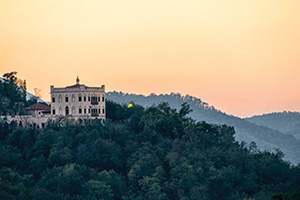 Montaigne: A Traveller Chasing the Healing Water
Montaigne: A Traveller Chasing the Healing Water
Mehmet Yaşar Ertaş
One of the celebrities chasing the healing water is famous French essay author Michel Eyquem de Montaigne. Journal of Voyage was written in 1580 during a seventeenth month of travel. The reader of Journal of Voyage meets an ordinary Renaissance intellectual who rushes to thermal spring baths to alleviate his suffering. Montaigne was hoping to regain his health in this journey. The notes taken in the initial days of the voyage clearly shows that he was pursuing to heal himself.
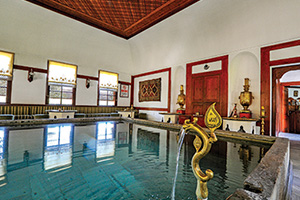 Inner Pools in Old Architecture
Inner Pools in Old Architecture
Ali Dost Ertuğrul
I n the geographical areas covered by the Islamic civilization, the functionality and grace of the existence of an architecture which develops along with the water immediately draws an attention. Pools and fountains in the gardens and masjids’ gardens, the fountains in the street corners, the baths as complementing element of the large small complexes come to mind under this heading. In all the settlement areas from the Central Asian cities to the cities of Iran and Middle East, from North Africa to Andalusia and Anatolia the water-related architectural elements have been widely used especially palaces and kiosks but also in civilian architectural products.
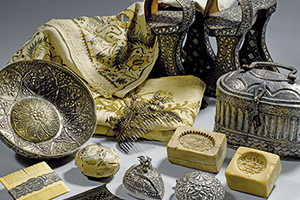 Water Objects
Water Objects
I n Turkish culture, water utilities used in everyday life address two basic purposes. The first is usefulness, and the second is aesthetic. From ancient times to our times water utilities is simply classified as cleaning and kitchenware. Elegant faucets, handmade bath bowls, embroidered pashkirs (towels), stamped soaps, ornamental glasses, copper mashrapas (copper mugs) and gughums (copper vessels) are the first to come to mind. Healing bowls used for health purposes are also produced by traditional methods that the public uses to protect themselves from physical and psychological disturbances.
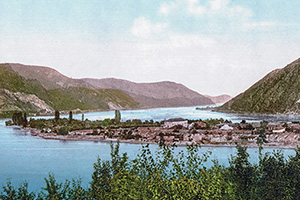 A Loss City: Adakale
A Loss City: Adakale
Haşim Şahin
The Adakale was buried under the waters of the dam, which was first declared to be built on the Bucharest radio in 1965 by the Romanian government. The entire population of Adakale was the Turks. From the first years of the Ottoman Empire, it came under the rule of the Ottomans, but frequently changed hands among the Ottomans, Austrians, Serbs and Hungarians. It was decided to stay in the Ottoman Empire with the Treaty of Karloff (1699). In 1923 with the Treaty of Lausanne Adakale came under the domination of Romania. Adakale, a living testimony to the history of the Danube region and buried under the waters of the dam.
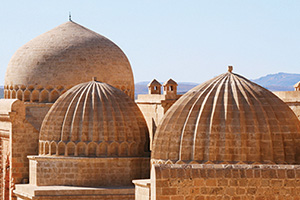 Kasimiye Madrasa
Kasimiye Madrasa
Jelin Maden
Kasimiye Madrasa is located on a very steep hill, dominating the Mesopotamian plain in Mardin. The construction of the Kasimiye Madrasa, which was started to be built during the Artuqids period, was abandoned in the years when Timur dominated Anatolia. At the end of the century Akkoyunlu sultanate completed madrasahs construction in the period of Kâsım İbni Cihangir. Madrasa is known to be one of the best educational institutions of the period. Both religious and scholarly sciences have been carried out in the Madrasa and these two sciences have harmonized with each other. On the walls of the madrasa and on the small rooms that are classed, there are icons of astronomy and medical science.
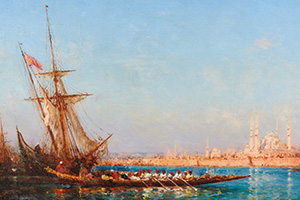 Boat Races in İstanbul
Boat Races in İstanbul
Ali Rıza İşipek
During the Ottoman period, one of the biggest entertainments of the people in Istanbul was to go to the parks where they were involved in a public life. Parks closeness to streams and having trees and green areas were the most sought-after features.
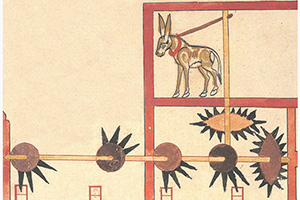 Water and Time in al-Jazari
Water and Time in al-Jazari
Mehmed Ali Çalışkan
Civilisations were mainly located near seas or rivers. Mesapotamian, Egyptian, Chinese, Latin, Ancient Aegean and Roman civilisations made water an important part and the basis of their life. If we just write about the competition the civilisations had with water throughout history, we can shed some light on the basis of world history. The main character of this historical narration is the head engineer of Artuklu civilization in the 1200s, Al Jazari. His technical genius still amazes historians and scientists today
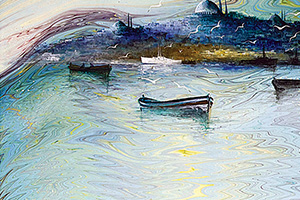 Ebru (Marbling)
Ebru (Marbling)
Hikmet Barutçugil
F rom a technical point of view, we can describe ebru as a fl oatation of metal oxide dyes on condensed water. In the preparation of the ebru materials, we can determine some approximate formulas. But the shapes formed on the water surface are a mystery. It is very unlikely that the person making the ebru will completely intervene in those designs. He/she hits the brush. This is unlikely to be controlled. So, there is a mystery. it’s like watching the transition of the whole world.
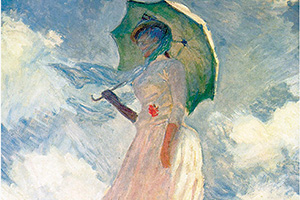 Nuance that Connects Dream with a Dream
Nuance that Connects Dream with a Dream
Pelin Ulca
The image of the landscapes has become one of the important sources of art. In pre-romantic traditions, dramatic landscapes stand out, along with the romanticism, although they are often used as backgrounds. Landscape paintings are images composed of motifs such as mountains, ovals, rivers, lakes, and by transferring what they usually see on the canvas. With every new movement, the water or other objects in the canvases are embroidered in diff erent forms. That’s why it is a great deal of interest for the very diff erent forms of water. In the air there is gas, in rivers or seas, in liquid, in pale colours, in the cold, as ice crystals.
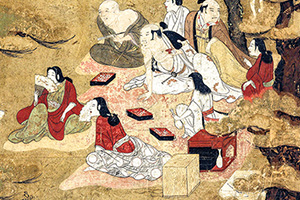 Water in Japanese Culture
Water in Japanese Culture
Feyza Betül Aydın
With the developing of ancient Greek philosophy, water is regarded as an element confi rming the existence of the civilization and in the artworks in which the mythological animations turn into three dimensions. With the acquaintance of the Christian culture of Rome, the water is become more visible in the works of art as means of purifi cation from sin. Among the works of art that refl ect water culture are the works of neoclassical and romantic trends. When it comes to the XX. centuries, it reveals easily perceivable works in order to read the consciousness that the person who has an essential connection with the sea lives.
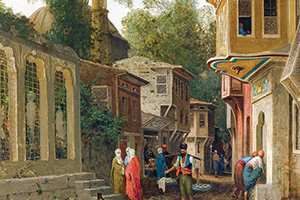 Childish
Childish
Mürsel Sönmez
The water is a mirror, because its nature is pure. It shows and tells us the truth, so he advises us to do the same thing. Fires, water extinguishes our fi res. It surpasses some steep roads to open a path for us in the desert of beings. It shows us to us to complete our mistake, to correct our mistakes, the child-water.
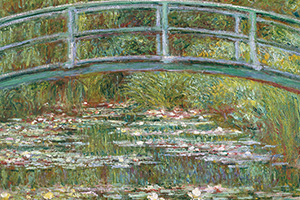 Going with the Flow of Water
Going with the Flow of Water
Bünyamin K.
I n the earliest known periods of history, we can see that man started to narrate with water. We know that drawings painted on the walls of caves, which are the fi rst examples of painting are made of water, soil and plant blends. We can say that ‘the fi rst paintings were made with watercolors’, taking into consideration that the fi gures in the cave paintings, which we know belonged to about thirty thousand years ago, were made with the water thinning of vegetative dyes. The most possible way to paint water is with water. Water is a technique of mistery and magic of art.
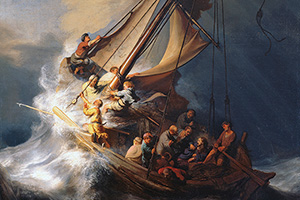 Reflections of Art on Water in Europe
Reflections of Art on Water in Europe
Serhat Kula
With the developing of ancient Greek philosophy, water is regarded as an element confi rming the existence of the civilization and in the artworks in which the mythological animations turn into three dimensions. With the acquaintance of the Christian culture of Rome, the water is become more visible in the works of art as means of purifi cation from sin. Among the works of art that refl ect water culture are the works of neoclassical and romantic trends. When it comes to the XX. centuries, it reveals easily perceivable works in order to read the consciousness that the person who has an essential connection with the sea lives.
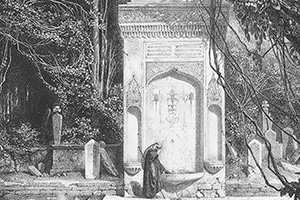 Water-Related Metaphors in Classical Turkish Poetry
Water-Related Metaphors in Classical Turkish Poetry
Muhammet Nur Doğan
I n classical Turkish poetry related to water, stream, sea, rain, fl ood, kevser, sebil, selsebil, tears, âb-ı hayât (water of life), horhor, fountain, cloud, rose water etc. many words and concepts fl uency, clarity, cleansing, gushing from the eyes of the fountain, granting human life to immortality, the harmonic dance of lover, pleasant smell, plundering mercy from the sky, vastness, depth, refl ectivity. In this article, fi rstly some words and concepts related to water such as “water” were discussed and then examples related to the use of words and concepts related to water and water in couplets selected from divan literature and mesnevîs
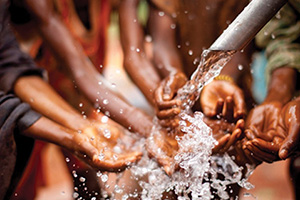 Water as a Hotbed of an Abuse
Water as a Hotbed of an Abuse
Dilaver Demirağ
The water issue, which was considered publicly in the past, can be said it served as a weapon to construct a world cartel with the current wave of globalization. Today, a legend of water scarcity has been created by multinational energy monopolies which are called “water hunters” in the literature. Because water has already passes oil, therefore it is called as blue gold, in terms of profi tability. What we live in today is the artifi cial scarcity of the water. It is also the multinational corporations that are causing this relevant issue.
 Water Wells in Africa
Water Wells in Africa
Jelın Maden
Africa is the leading continent where water problems are experienced. On the one hand Africa is struggling with inequality in poverty and income distribution, the problem of access to clean water resources is increasing day by day due to political instability, ethnic confl icts, climate change, human and natural problems. So that nearly a billion people in Africa are deprived of the access to clean, healthy water. This means that one out of every eight people on the global scale cannot reach the water. It is unlikely that this situation will be resolved without international assistance. However, the aid is showing a course well below the need. In addition to the many public institutions, especially in the corporate sense TIKA from Turkey and also many international non-governmental organizations which are centred in Turkey are trying to convey food and health assistance to the African continent. Within this scope, hundreds of water wells are opened every year and thousands of people in the region are trying to reach to clean water resources.
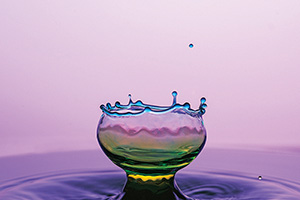 Water Drops Photography
Water Drops Photography
I t is very easy to see the water as a whole, but there are those who think about how to see the unique form of the drops and the diff erent forms they contain. Here, the guest of this issue Yousef Sayyadi presents us with a unique sense of life with the amazing water-drop photographs. The aspect of the coincidence in water-drop photography is so high that you do not know what shape you will get. This means a lot of experimentation and little results.
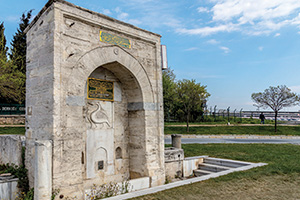 Zeytinburnu Water Civilization
Zeytinburnu Water Civilization
Two register books dating from 1844 (1260) in the Ottoman Archives contain records of the resident Muslim community in the outskirts of Istanbul’s city walls. One of them is the book that married Muslims registered in and the other one is for the single Muslims. The fi rst book contains two units belonging to today’s Zeytinburnu borders with the name of “Merkezefendi Mahallesi ve Dergah” and “Yenikapı Mevlevihanesi”. In the book of singles, there are registered neighbourhoods as besides Topkapi, there are Takyeci bachelor, Merkezefendi bachelor and with Fatih (Sultan Mehmed Han) bachelor outside Yedikule.
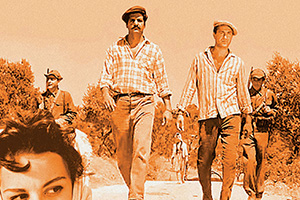 Ownership of Water in Cinema: Susuz Yaz
Ownership of Water in Cinema: Susuz Yaz
Kerime Yıldız
When Susuz Yaz, which received great interest in the screening process, was invited by Berlin Film Festival, is examined by the Censorship Board and the decision was this: “This fi lm can not represent Turkey.” Then, Metin Erksan and Ulvi Dogan decided to participate independently from the state. Ulvi Dogan takes the negatives of the fi lm to Germany in the trunk of a car and attended the competition. However, he changed Metin Erksan’s name to Ismail Metin in the poster he made. The fi lm is judged by the festival jury to be awarded the “Golden Bear” because it tells “the story of the HabilKabul in a very striking and modern way.”
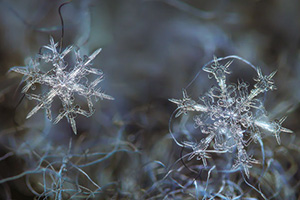 Water as Snow
Water as Snow
Zeytinburnu was a place where the saints lived outside the walls of the old city, villages with small ayazmas (the holy springs). Later, around these holy waters, there a living space where believers of two religion, from fi ve diff erent denominations lived together in peace, emerged Cemeteries, monasteries, mosques, tekkes (dervish lounge), cemevi structures, medical and spiritual functions present evidence of this colourful life in there
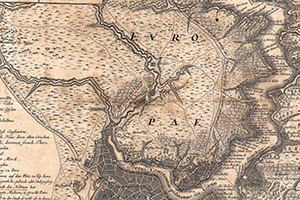 In Census of 1844 Merkezefendi and its Vicinity
In Census of 1844 Merkezefendi and its Vicinity
Ahmet Ergün
Two register books dating from 1844 (1260) in the Ottoman Archives contain records of the resident Muslim community in the outskirts of Istanbul’s city walls. One of them is the book that married Muslims registered in and the other one is for the single Muslims. The first book contains two units belonging to today’s Zeytinburnu borders with the name of “Merkezefendi Mahallesi ve Dergah” and “Yenikapı Mevlevihanesi”. In the book of singles, there are registered neighbourhoods as besides Topkapi, there are Takyeci bachelor, Merkezefendi bachelor and with Fatih (Sultan Mehmed Han) bachelor outside Yedikule.
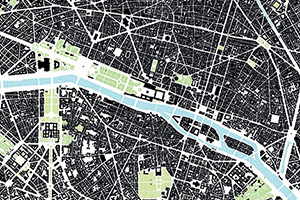 (Horizontal City) As a Urban Movement
(Horizontal City) As a Urban Movement
Şevket Ercan Kızılay
Turgut Cansever’s urbanization strategy can be called ‘Ufki city’. Although there is many constitutive features of this paradigm, the main factor that draws attention as one of the most important of these is the “Turkish house”. Therefore, if new urbanization strategies are to be determined as a basic parameter, then the housing production practices should be centered around the Turkish house. Therefore, it is necessary for the conception and ideation of the Turkish house to be known in a more detailed way, and the discourses of the original architecture on this subject to be popular.
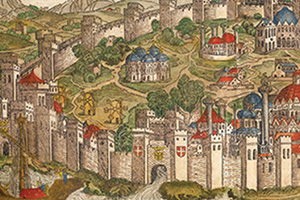 Legends of Foundation from Byzas to Constantinople
Legends of Foundation from Byzas to Constantinople
Özgür Virlan
When Istanbul, which was the capital city of two great powers of world history, has been profoundly rooted, these ancient legends have also been told. In the article, it was mentioned how the city took the name Byzas, the Bosporus which means ‘the cow passage’ and legends of foundation from the Byzantion to Constantinople.
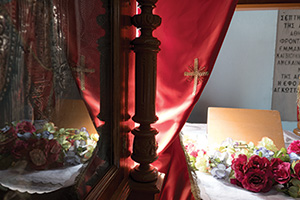 A Sacristan of İstanbul
A Sacristan of İstanbul
Murat Öztabak
I stanbul has been a host for Muslims, Greeks, Armenians and Jewish communities since its conquest by Ottomans till today. In this work, writer gives information about the Greeks one of the important communities of this multicultural structure in Istanbul and try to tell the traditions and customs of aforesaid community and tells stories from sur içi (inside the city walls) and Kazlıçeşme. In this work which is an oral history study, as a narrator, we will be accompanied by Sacristan of Aya Paraskevi Church Tanaş Özkaramihaloğlu.
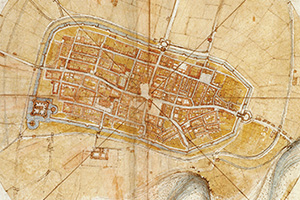 From Farabi’s Civilization to Ibn Khaldun’s Inhabitedness
From Farabi’s Civilization to Ibn Khaldun’s Inhabitedness
Lütfi Bergen
Urban criticism in Turkish thought treads upon a naive solution brings a discourse of “back to village” In the essay, it is emphasized that this ‘native’ dialectic inevitably constitutes a dichotomy of urban and rural life and Ibn Haldun’s reference is a widespread intellectual reflex, the necessity of imposing the possibility of a new theory that transcends the village-city dialect by revealing the differences between Ibn Khaldun and Fârâbî . The differences between Ibn Khaldun and Fârâbî are also discussed in the restricted framework.
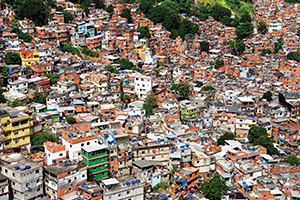 An Interview with Neil Smith on Gentrification
An Interview with Neil Smith on Gentrification
Aconversation about gentrification with Neil Smith, an academic, an “intellectual activist” who affects the modus operandi and interests of fields such as urban studies, geographical and political writings, and human geography.
 Bending Space
Bending Space
Muhammed Nur Anbarlı
Our relationship with the space, our threshold to see and grasp it, positioning our body in this space as o spot and connection with a cultural language of space we are in give an ontological notion. In general, this ontological notion enables the gazer to be motivated and settled in the desired position. We are experiencing a period of time that to shake, to renew this notion a new name, a new view, a new visuality is needed.
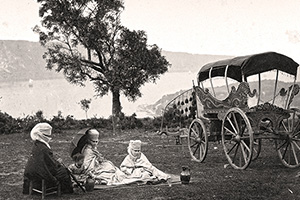 İstanbul between Dreams and Memories
İstanbul between Dreams and Memories
Cemal Şakar
Cities become an autonomous entity that existed for them and again acted for themselves. The relationship between man and city has transformed into a relation of subject and object rather than a living, organic relation As a observing and analysing subject human beings objectify the city; puts him/herself in the centre and rebuilds the city according to him/herself. Now the city itself, an independent human being, no reality. In the context of our writing, A. Hamdi Tanpinar is building an Istanbul in dreams, while Orhan Pamuk is pursuing an intellectual image
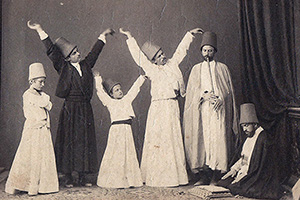 Abdülbâkî Nâsır Dede
Abdülbâkî Nâsır Dede
Ekrem Sakar
I t was perfectly normal for a person who grow up in an environment surrounded by the Sufis become a postnişîn of the tekke in the light of their willingness and admiration. Abdülbâkî Nâsır Efendi who born in Istanbul Yenikapi district, was one of them. His father was one the sheikhs of the Yenikapi Mevlevihanesi Ebubekir Dede and his mother Saîde Hanım was the daughter of one of the sheikhs of Galata Mevlevihanesi Kutbü’n-nâyî Osman Dede. Abdülbâkî Nâsır Efendi’s connection with the Mevlevi order has yet to begin from his household.


